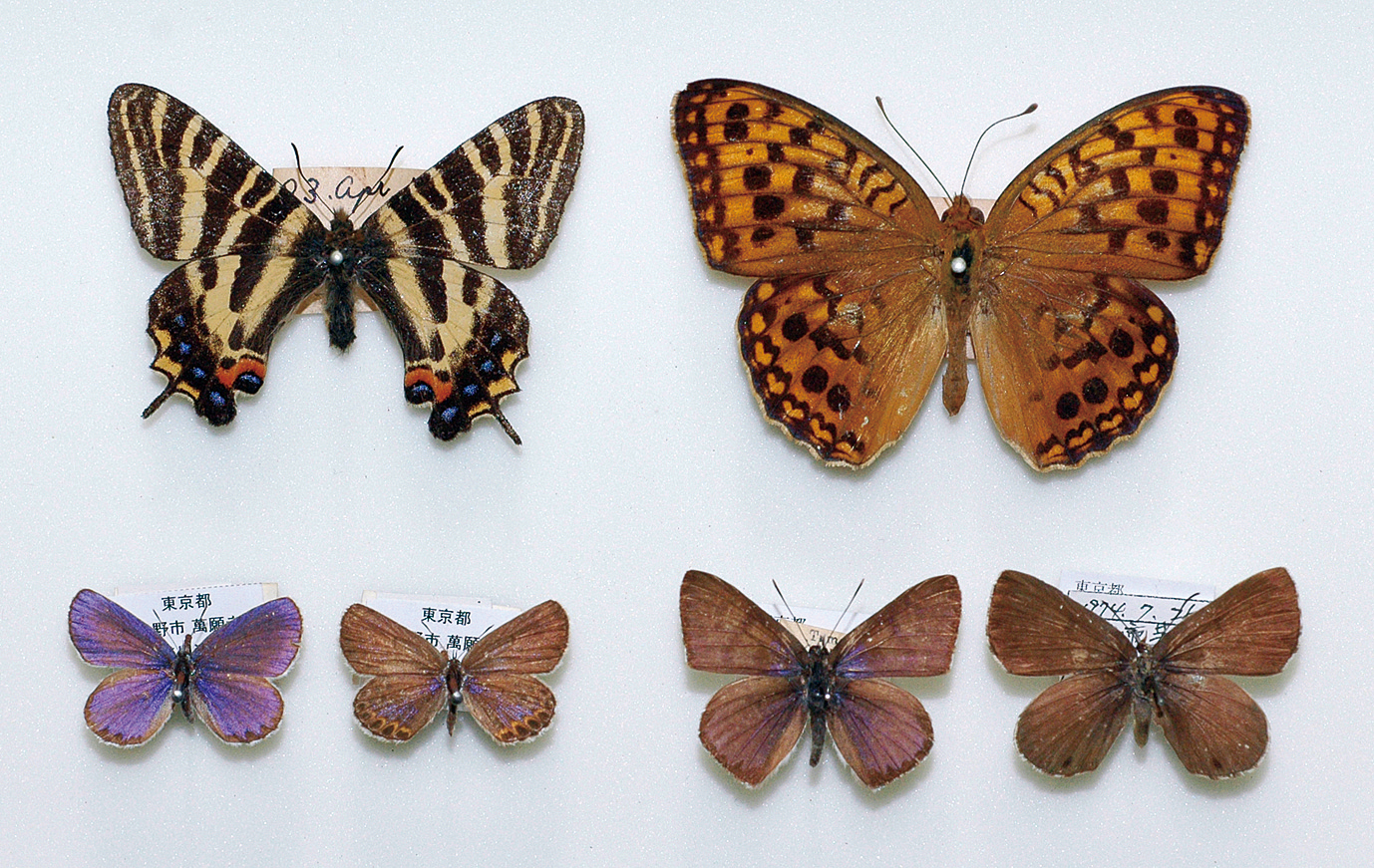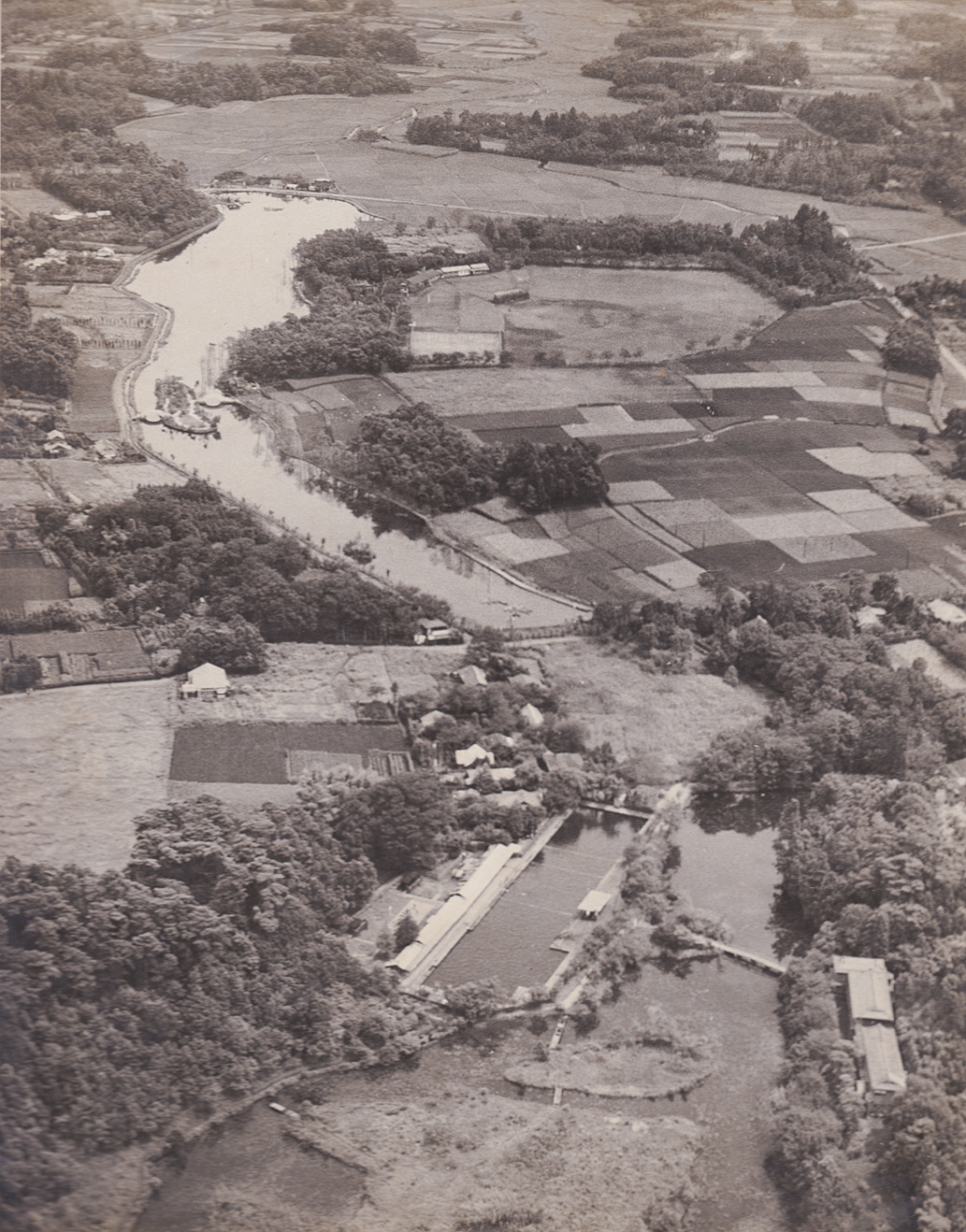C7
Butterflies extinct in Tokyo
Butterflies are very useful as an environmental indicator because they are quite familiar for human beings and each species tends to inhabit a specific and different environment. Moreover, there is a lot of distribution information by amateur researchers and enthusiasts. Therefore, the insect is one of the few living creatures which we can investigate in detail the process of extinction caused by environmental changes.In Tokyo Metropolis, the most urban area of Japan, 127 butterflies excluding 13 accidental species have been recorded in the past. Of these, 13 species are now extinct from this area due to anthropogenic impacts such as urban development, expansion of residential zones, river improvement, agricultural intensification, forest devastation, etc. primarily in the period of rapid economic growth after World War II.In this permanent exhibition, the following representatives are shown: Luehdorfia japonica, Niphanda fusca, Plebejus argyrognomon and Fabriciana nerippe. Most of these butterflies were extinct from Tokyo by the 1970s. Luehdorfia japonica and N. fusca were severely affected by residential land development and forest devastation. The extinction of P. argyrognomon was considered to be influenced by river improvement and residential land development outside the river banks. The move away from maintaining the vast grasslands home to F. nerippe, used for thatching and cattle grazing, combined with use of strong pesticides, caused its extinction. (Masaya Yago)
References
矢後勝也・平井規央・神保宇嗣(編)(2016)『日本産チョウ類の衰亡と保護 第7集』日本鱗翅学会。
西多摩昆虫同好会(編)(2012)『新版東京都の蝶』けやき出版。


